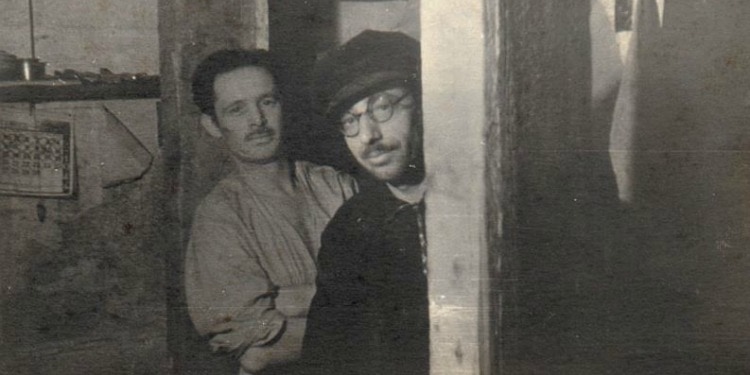A Light in the Cellar
Stand for Israel | July 24, 2019

Robert and Johanna Seduls
Robert Seduls was a Latvian Christian who had been both a seaman and a boxer. But when the Nazis overtook his country during World War II, Robert was working as a janitor in the city of Liepaja. He was friends with David Zivcon, a Jewish resident of the building, and as the Nazis began their dastardly plans for Latvia’s Jews, Robert promised David his help. What Robert did not know was that he would soon be helping more than just his friend.
The Nazis had gathered the city’s Jews into a ghetto, as they did across much of Europe. By October of 1943, David realized the ghetto would only lead to death. It was time to flee. Along with his wife and another Jewish couple, David escaped the ghetto. Robert welcomed the four into his home, hiding them in a concealed area of the cellar. More were to come.
The initial four would stay hidden in the basement for a year and a half, until the area had been liberated from the Germans. But a few months later they were joined by three more Jewish men, then three more. In April of 1944, David’s sister Rivka arrived with her three-year-old daughter Ada. Robert realized the cellar was no place to hide a toddler, so he arranged for the girl to stay with a widow nearby. But even with the toddler gone, the cellar still held 11 people.
Feeding themselves during the war was hard enough for Robert and Johanna, much less 11 extra mouths. Some of the hidden Jews were expert workmen, so they helped with numerous repairs for Robert, bringing in more money to feed them all.
One of the Jews in hiding wrote of the time in the cellar in his diary, describing the crowded and stressful conditions and the constant fear of being found. The stress wore on Robert, too, as a diary entry from December 1944 notes: “Robert is terribly nervous.”
Robert had every reason to be nervous, as the Nazis and their lackeys were always on the lookout for escaped or hidden Jews. Because of these raids, Robert installed a special light in the cellar to warn those in hiding of approaching patrols. Once, he flashed the light as Nazis approached. For an hour, the hidden Jews stood ready, armed with pistols, ready for a firefight with the murderous Germans. Luckily, the Nazis left before the Jews could be discovered.
The physical light was not the only light Robert brought to his hidden friends. He also provided them with books and newspapers to keep their spirits up, and would regularly visit little Ada, taking photos of her for her mother still in the cellar.
Sadly, Robert Seduls would not live to see the war’s end. He was killed by a shell from the approaching Russians in March of 1945. Johanna, however, kept up her dead husband’s good work, caring for the Jews until the war was over.
Of the 7,000 Jews who had lived in the city of Liepaja before the war, only 30 of them survived the Holocaust. Eleven of those 30 were saved thanks to Robert and Johanna Seduls, who were named Righteous Gentiles in 1981.
